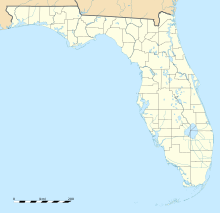
Heidekreis is a district (Landkreis) in Lower Saxony, Germany. It is bounded by the districts of Harburg, Lüneburg, Uelzen, Celle, Hanover, Nienburg, Verden and Rotenburg.

The Naval History and Heritage Command, formerly the Naval Historical Center, is an Echelon II command responsible for the preservation, analysis, and dissemination of U.S. naval history and heritage located at the historic Washington Navy Yard. The NHHC is composed of 42 facilities in 13 geographic locations including the Navy Department Library, 10 museums and 1 heritage center, USS Constitution repair facility and detachment, and historic ship ex-USS Nautilus.

Keweenaw National Historical Park is a unit of the U.S. National Park Service. Established in 1992, the park celebrates the life and history of the Keweenaw Peninsula in the Upper Peninsula of the U.S. state of Michigan. As of 2009, it is a partly privatized park made up of two primary units, the Calumet Unit and the Quincy Unit, and 21 cooperating "Heritage Sites" located on federal, state, and privately owned land in and around the Keweenaw Peninsula. The National Park Service owns approximately 1,700 acres (690 ha) in the Calumet and Quincy Units. Units are located in Baraga, Houghton, Keweenaw, and Ontonagon counties.

The African American Museum in Philadelphia (AAMP) is notable as the first museum funded and built by a municipality to help preserve, interpret and exhibit the heritage of African Americans. Opened during the 1976 Bicentennial celebrations, the AAMP is located in historic Philadelphia on Arch Street, a few blocks away from the Liberty Bell.

The Center for Land Use Interpretation (CLUI) is a non-profit research and education organization involved in exploring, examining, and understanding contemporary landscape issues in the United States. Founded in 1994, the CLUI organizes exhibitions, programs, field trips, and maintains an online archive and database to engage the public's understanding of the man-made landscape, and extent and impacts of human interactions with the surface of the earth. The Center employs a variety of methods to this end, engaging in research, classification, extrapolation, and exhibition.

The Halifax Historical Museum displays local history from 5,000 BC to the present day in a National Register of Historic Places listed building designed by Wilbur B. Talley in Daytona Beach, Florida, United States. The museum is housed in the former Merchants Bank building (1910), added to the U.S. National Register of Historic Places on January 6, 1986. It is located at 252 South Beach Street.
History Colorado is a historical society that was established in 1879 as the State Historical Society of Colorado, also known as the Colorado Historical Society. History Colorado is a 501(c)(3) organization and an agency of the State of Colorado under the Department of Higher Education.

Cultural property are physical items that are part of the cultural heritage of a group or society. They include such items as historic buildings, works of art, archaeological sites, libraries and museums.

The Underwater Archaeology Branch (UAB) of the Naval History & Heritage Command (NHHC) is a unit of the United States Department of the Navy. It was formally founded in 1996 as a consequence of the emerging need to manage, study, conserve, and curate the U.S. Navy's submerged cultural resources.

The Minnesota Military Museum is the principal activity of the Military Historical Society of Minnesota (MHSM), a non-profit educational organization chartered to preserve and explain Minnesota’s military history. It is federally recognized as a charitable 501(c)(3) organization. MHSM operates the museum as a public–private partnership in cooperation with the Minnesota Historical Society and the Minnesota National Guard. The museum, which is open to the general public year-round, is located a few blocks inside the main gate at Camp Ripley, a state-owned 53,000 acres military training center located on the Mississippi River just north of Little Falls in central Minnesota. The museum is certified by the United States Army Center of Military History although its mission encompasses all branches of service.
This page is based on this
Wikipedia article Text is available under the
CC BY-SA 4.0 license; additional terms may apply.
Images, videos and audio are available under their respective licenses.










